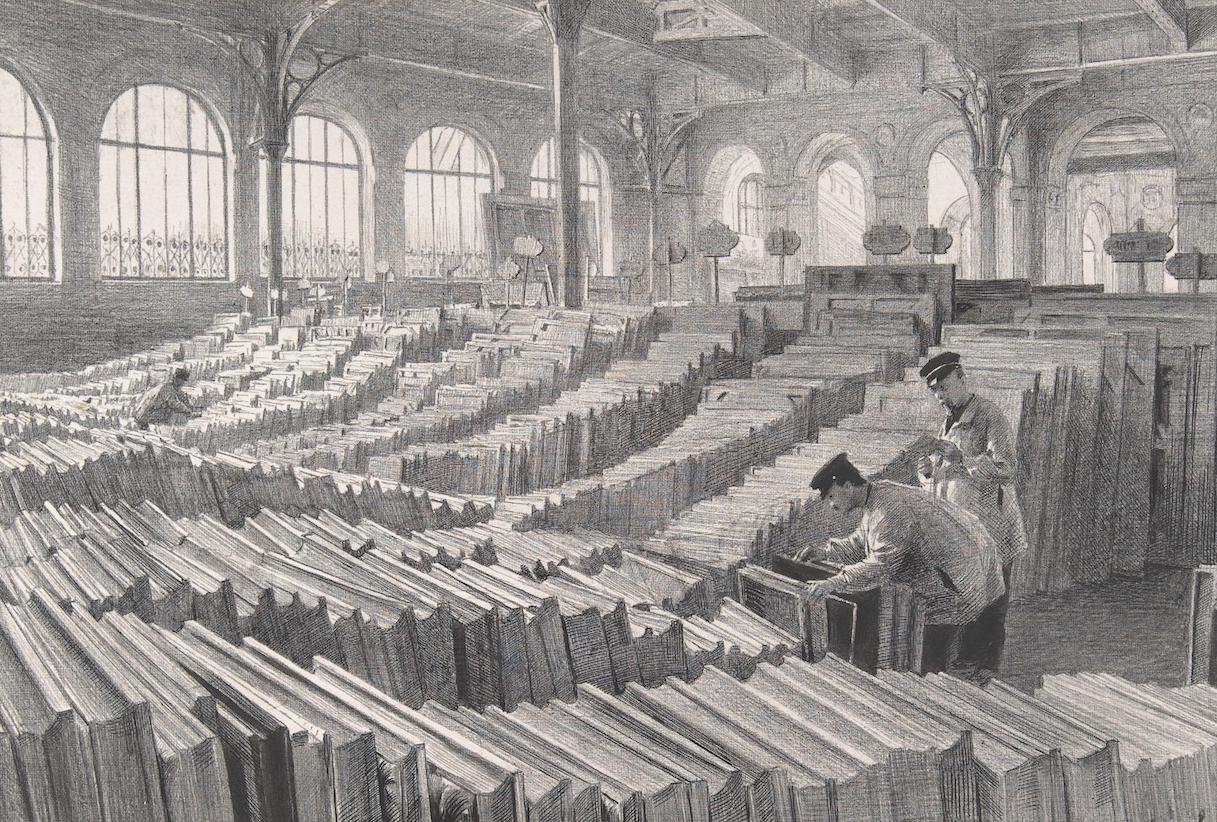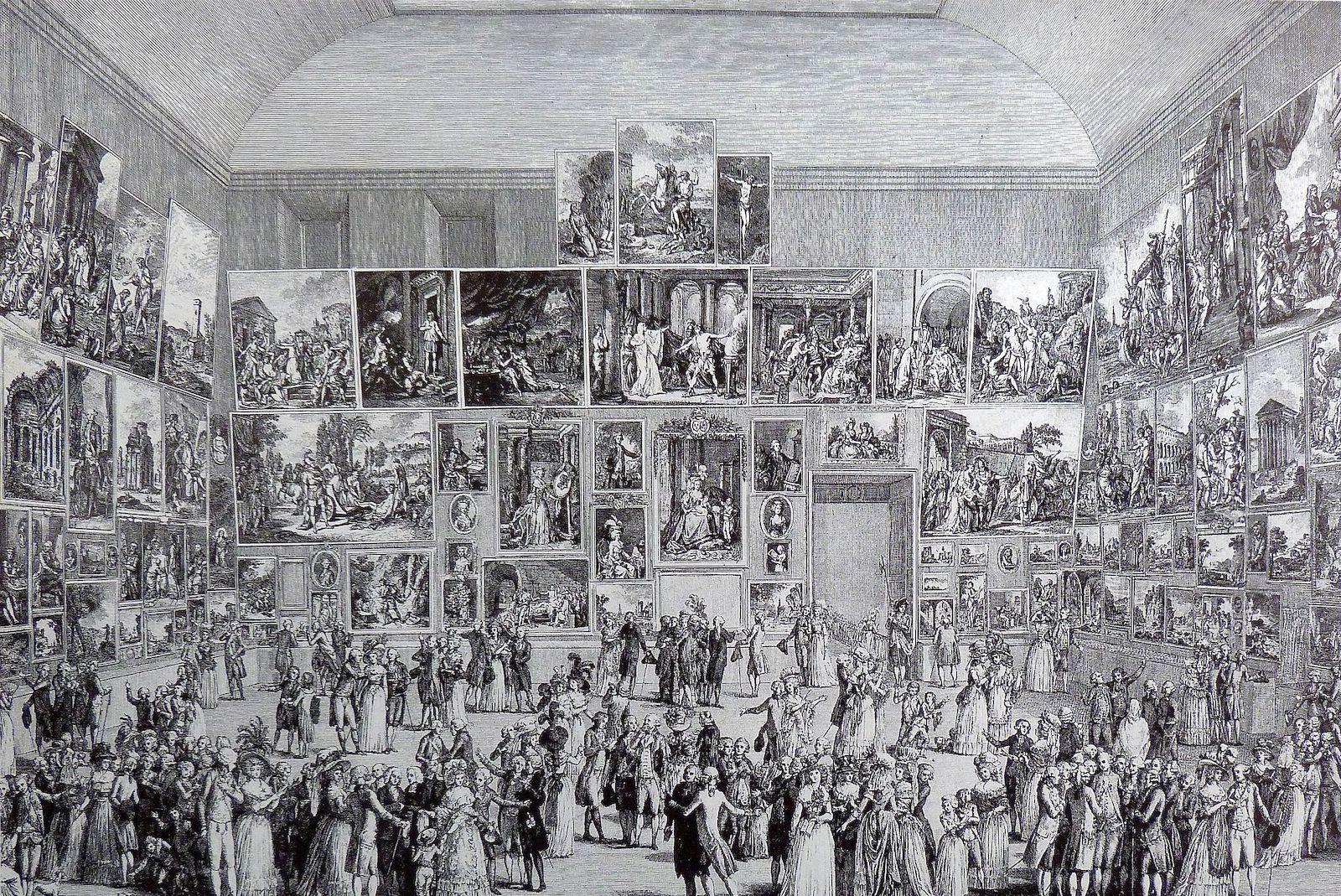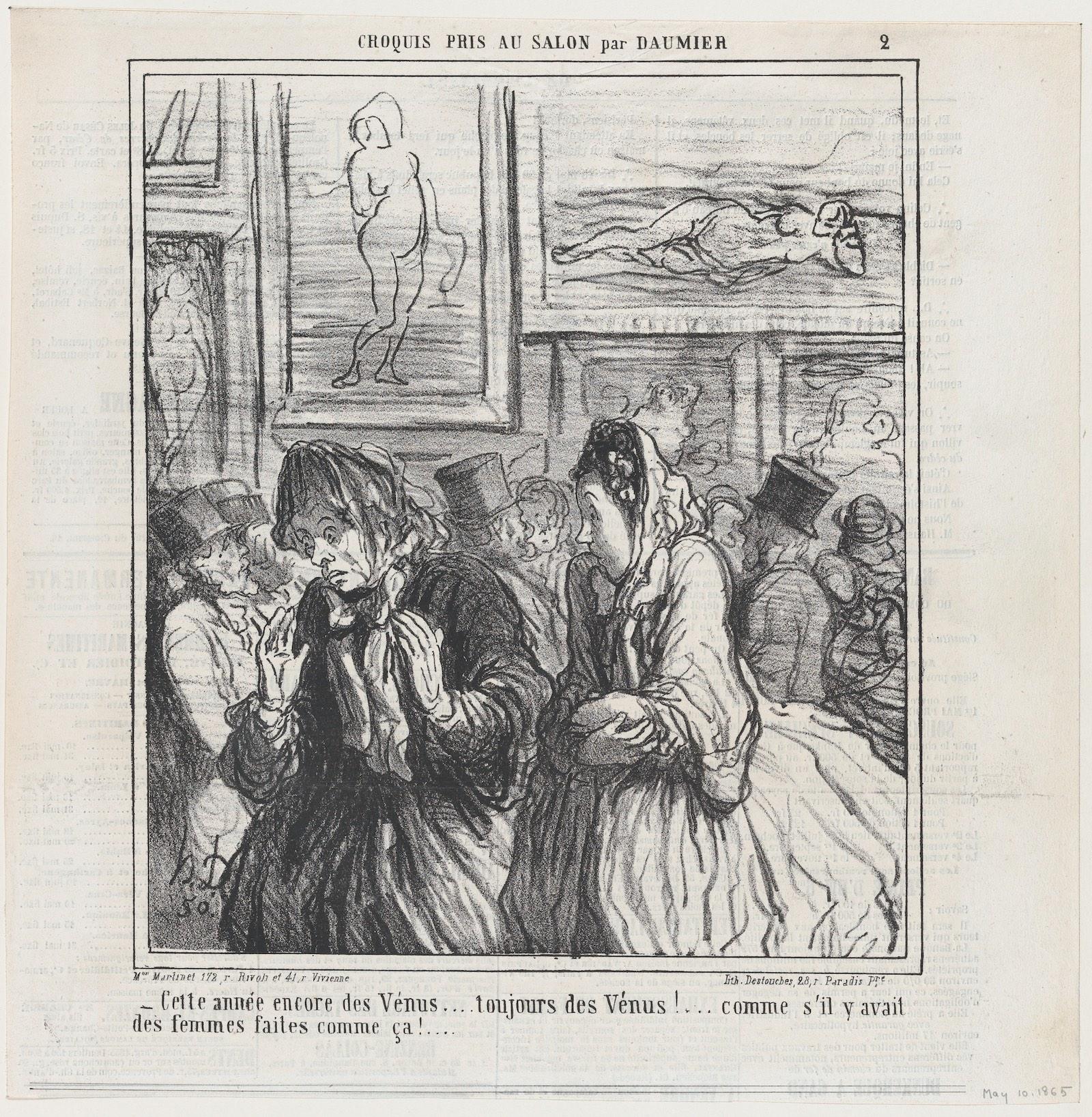The word salon has a rich history of its own and was even used to indicate several different things within France during this period including an elite social gathering often led by a woman, a large reception hall, or an academic art exhibition.
The word first began to appear with regularity in France in the seventeenth century. According to Steven Kale’s French Salons, the marquise de Rambouillet (1588-1665) conceived the social salon “as an architectural framework for a new kind of sociability.” As is typical for French social conventions of the time, the structure of the social salon is fascinating and practically an art form in itself.
Although this type of salon is not the focus of this article, the unique social and ideological mobility fostered by the social salon is worth mentioning if only to offer the reader a better look at the society in which the relatively restrictive art salon operated.
The first well-known academic salon was the Salon de Paris (also Salon or Paris Salon), held in 1667. Launched by France’s Académie royale de peinture et de sculpture—which itself was established in 1648—and sponsored by the absolute monarchy of France, it featured work made by academy graduates.
The initial goal of the event was to showcase the success of the Academy’s students. The exhibition had a huge impact and became the first-ever show to run annually or biennially in the Western art world. Even so, it was not known as the Paris Salon until after 1725, when it was held in the Salon Carré, a room within the Louvre.
The Salon also gave birth to the art critic. Writers like Denis Diderot (1713-1784) and Charles Baudelaire (1821-1867) made big names for themselves by writing sometimes scathing reviews of the exhibitions.































